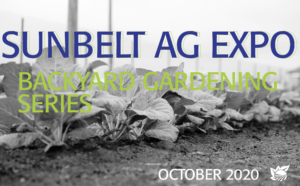 Nothing is more irritating than seeing a crop you have invested time and money into be destroyed by pests and diseases. There are many practices you can put in place to keep these annoyances out. Today we will take a deeper dive into what is preventing you from having your best harvest.
Nothing is more irritating than seeing a crop you have invested time and money into be destroyed by pests and diseases. There are many practices you can put in place to keep these annoyances out. Today we will take a deeper dive into what is preventing you from having your best harvest.
Some of the most common pests and diseases we see in our vegetables throughout the southeast include powdery mildew, root-knot nematodes, and southern blight. It is vital to know how to identify diseases and pests to put practices in place to prevent them.
Powdery mildew is a fungal disease that commonly affects cucurbits, including pumpkins, squash, cucumbers, and melons. Powdery mildew is easiest to identify as it covers the upper part of the leaves with white powdery spots. Powdery mildew slows the growth of your plant and reduces fruit and yield quality.
The other disease to keep an eye out for in the garden is southern blight, also known as southern wilt or southern stem rot. This disease is a soil-borne fungus and can attack many different vegetable and ornamental plants. To spot southern blight, you need to look for discolored lower leaves and wilted foliage; these symptoms will usually lead the plant to collapse, resulting in a crop loss.
Not only do you have to watch out for diseases in the garden but also be on the watch for non-beneficial pests. Root-knot nematodes are a parasitic nematode and are different from predatory nematodes. Predatory nematodes are often referred to as beneficial nematodes because they attack other pests. Root-knot nematodes are invisible to the naked eye and attack living plant matter, causing the plant to wilt, and it may result in stunted growth and lack of fruit production.
These are just a few of the common pests and diseases found in the home garden. Though many things can hinder you from having a successful garden, there are also many ways to prevent it. One major thing to do to keep these things out of your garden is selecting the right seeds. If you realize last year you had powdery mildew on your cabbage, next year, you need to get seeds that are powdery mildew resistant. Growing the correct variety for your garden will ensure fewer diseases and pests, which will lead to a successful harvest.
